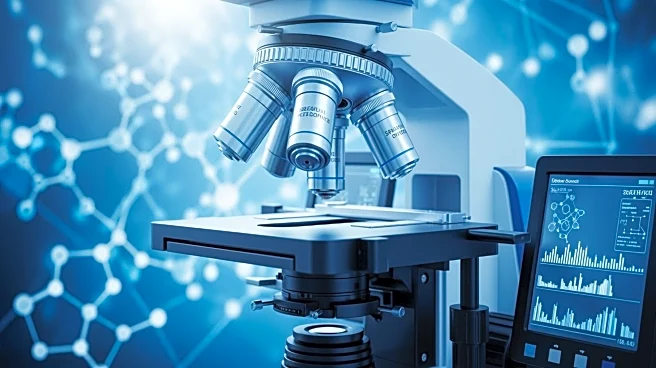What's Happening?
Atomic force microscopy (AFM) is being utilized to advance biomechanical research by providing high-speed structural imaging and nanomechanical measurements. This technology offers insights into the relationship
between structure, morphology, and function at the cellular and molecular level, applicable to both normal and diseased states. The infographic highlights the technical features of AFM and its implementation in biomechanical investigations, supported by Bruker BioAFM.
Why It's Important?
The use of AFM in biomechanical research is significant as it allows scientists to explore cellular and molecular structures with precision, potentially leading to breakthroughs in understanding diseases and developing new treatments. This technology can impact various fields, including medical research, pharmaceuticals, and biotechnology, by providing detailed insights that were previously unattainable. Stakeholders in these industries stand to benefit from enhanced research capabilities and improved diagnostic tools.
What's Next?
As AFM technology continues to evolve, researchers may explore new applications in other scientific fields, such as materials science and nanotechnology. The ongoing development of AFM could lead to more sophisticated instruments that offer even greater resolution and speed, further expanding its utility in research and industry.
Beyond the Headlines
The integration of AFM with artificial intelligence could revolutionize the way researchers analyze biomechanical data, offering automated insights and predictions that enhance the understanding of complex biological systems. This could lead to ethical considerations regarding data privacy and the use of AI in scientific research.











